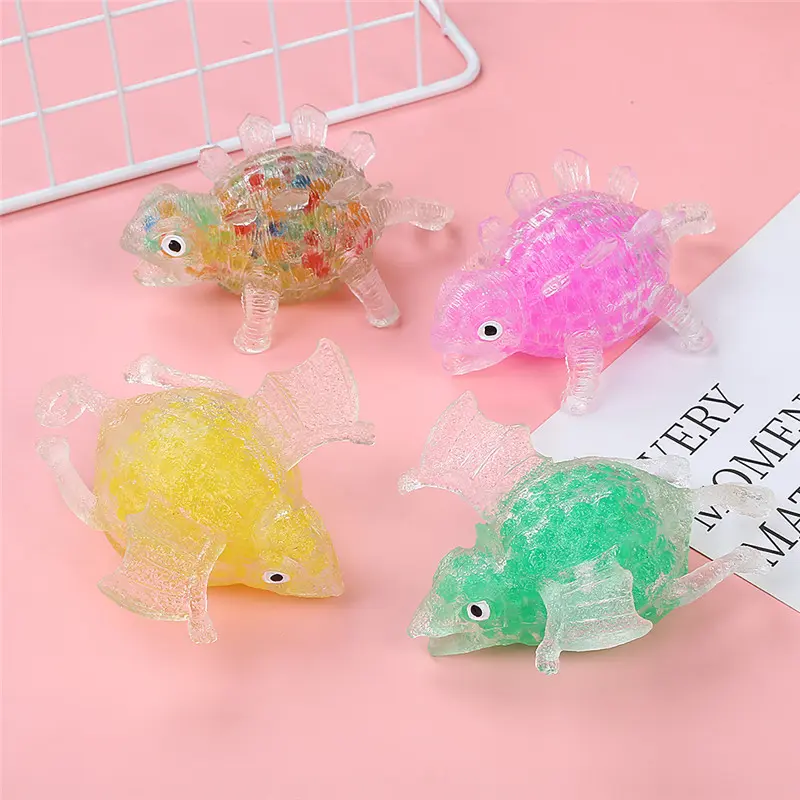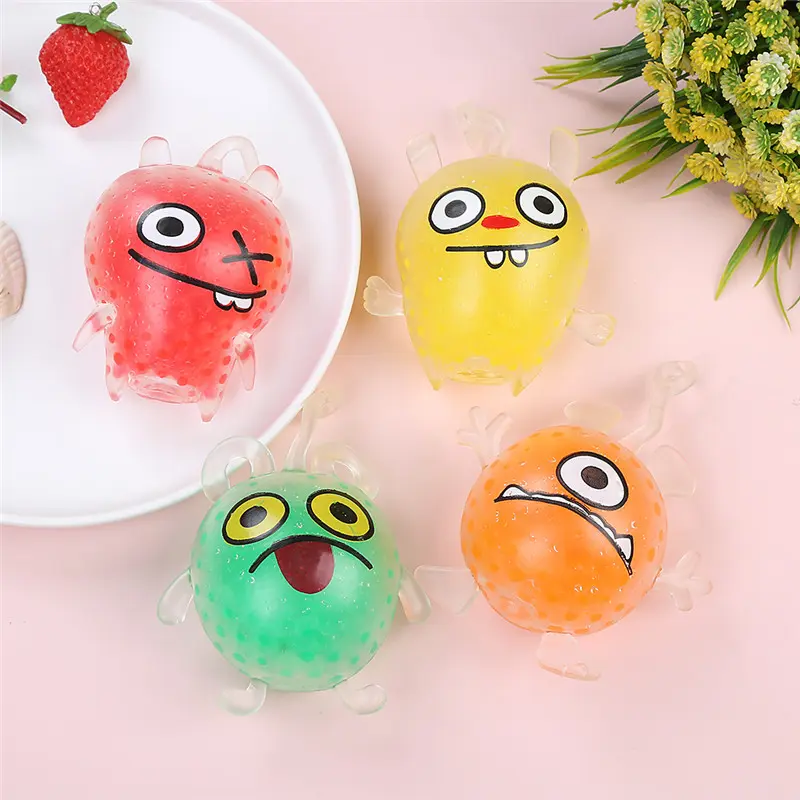Stress Relief Toys Sales on Amazon
1. As workplace involution and economic anxiety become the norm, stress relief toys have risen from a fringe category to become an essential emotional necessity on Amazon. Data shows that the global stress relief toy market is projected to reach $5.52 billion in 2024 and climb to $5.88 billion in 2025, with a compound annual growth rate of 6.6%. As a core global e-commerce channel, Amazon’s sales data clearly demonstrates the explosive growth potential of this market segment. The keyword “stress toys” alone has consistently generated over 100,000 searches per quarter for the past five years, demonstrating the continued strong purchasing intent among target consumers. From Easter finger-tip transforming toys that sold over 40,000 units in 30 days to adult pacifiers that exceed 5,000 units per month, Amazon’s best-selling list proves that the stress relief toy business is no longer just a small business.
II. Key Amazon Sales Insights: The Triple Code of Category, Region, and Demographic
(I) Hot-Selling Categories: From “Classic” to “Scenario-Based Innovation”
Amazon’s sales data clearly distinguishes between “evergreen” and “newcomer” stress-relieving toys. The logic behind each category’s hot sales is distinct:
Fingertip Control: The “Hidden Essential” of the Office
Classic categories like fidget spinners and infinite cubes consistently dominate sales, particularly among programmers and internet professionals. A Russian programmer purchased a metal fidget spinner on the platform. Its durability and smooth rotation have made it a staple for stress relief at work. These products, being silent and non-disruptive, have a high penetration rate in offices. Data from 2025 shows a 15% year-on-year increase in searches for advanced products like magnetic building blocks and silent stress-relieving grippers, demonstrating a growing trend in adult toy innovation. Squeeze and Shape: Social Media-Driven “Influencer” Products
TPR-based squeeze toys and stress relief balls are the “traffic kings” on Amazon. The global TPR stress relief squeeze toy market is projected to reach $500 million in 2025 and soar to $1.8 billion in 2033, with a compound annual growth rate of 15%. These products are ideal for fragmented activities like commuting and studying. American office workers have made silicone squeeze balls a must-have due to their “novel design and interactive sound.” The incorporation of festive elements further boosts sales. For example, squeeze toys with Easter egg and bunny designs can generate over $350,000 in sales in 30 days.
Emerging Functional Categories: “Emotional Solutions” in the High-End Market
“Functional stress relief products” such as adult pacifiers are on the rise. One adult pacifier on Amazon US sells over 5,000 units per month, and Google Trends shows a 400% increase in searches, making it three times more popular than regular stress relief toys. These products are no longer limited to “physical stress relief” but also address additional needs such as nail biting relief and insomnia relief. 70% of buyers consider them “non-drug stress relief tools.”
(II) Regional Sales Differences: From Willingness to Pay to Precise Preferences
The sales performance of Amazon’s different marketplaces is deeply tied to regional culture and consumer habits, providing a valuable indicator for product selection on independent marketplaces:
North America: High-Per-Order “Quality Seekers”
American and Canadian consumers represent the core purchasing power of stress relief toys, with an average per-order spending of $10-20. They are willing to pay a premium for multifunctional, well-known brands. They prefer safe materials like silicone and TPR and place great emphasis on product reviews. A squishy ball with a sound function has become a top choice among professionals due to its “novel design and 90% positive review rate.” During Easter, sales of transformable fingertips toys on the North American marketplace surged 300%, demonstrating the enormous potential of holiday marketing.
Europe: A “Double Believer” in Eco-Friendly Design
Users on platforms like the UK and Germany prefer eco-friendly materials like natural wood and organic cotton. Products with simple designs and soft colors are more likely to sell. A German kindergarten teacher purchased wooden decompression blocks on the platform, which became a hit due to their safety and suitability for early childhood education. These products command a per-customer price of approximately €5-15, and designer brand loyalty is exceptionally high.
Asia-Pacific: A “Diverse Demander” Focusing on Value
Users in Japan, South Korea, and Southeast Asia are price-sensitive, with an average per-customer price of $3-10 USD. However, they are irresistible to products with “cute designs and novel features.” Magnetic clay, popular among Korean college students, and Zen-style wooden toys, popular in Japan, are both consistently top sellers due to their “combination of fun and value.”
Middle East: A “Quality Showoff” in the High-End Market
Sites like Saudi Arabia and the UAE are “high-priced markets,” with consumers willing to pay $50-100 USD for decompression toys made of crystal and gemstones, even giving them as business gifts. This type of product focuses on “brand recognition combined with regional design elements,” and international luxury brands are more likely to be favored.
(III) Consumer Demographics: Who Pays for “Emotional Value”?
Amazon’s user profile reveals the core purchasing group for stress-relieving toys:
High-pressure professionals: 62% of those aged 20-30 working in the internet and finance sectors work over 10 hours a day, experiencing significant stress symptoms such as insomnia and nail biting. They prefer quiet, portable products, such as office hand grippers and fingertip cubes, viewing them as “low-cost emotional first aid kits.”
Female-dominated market: Over 70% of buyers are female, particularly favoring cute squishy toys and attractive stress-relieving mats, which they use for both self-regulation and as gifts.
Parents and children: Parents tend to buy safe toys for their children, such as wooden building blocks and silicone squishy balls, to relieve anxiety and improve fine motor skills. The repurchase rate for these “parent-child toys” is 36%.
III. The Logic Behind Sales: An Upgrade from “Functional Needs” to “Emotional Consumption”
The surge in Amazon sales is essentially a profound shift in consumer motivations. Data shows that 55% of buyers purchase decompression toys for “functional needs,” 42% for “self-pleasure,” and 36% for “showcasing taste.” This means that products must meet three key values:
Basic Functional Value: Material safety is paramount—products made from food-grade materials like silicone and TPR have a 40% higher positive review rate than those made from standard materials. Durability drives repeat purchases, with Russian users having a 28% repurchase rate for metal fidget spinners.
Emotional Experience Value: The core of social media communication is the “immersive feeling of stress relief.” The #decompression hashtag on TikTok has over 25 billion views. The “slow rebound” feel of the Squeeze toys and the “rhythmic rotation” of the fidget spinners have both become viral hits due to their “instant emotional release.”
The value of adapting to various scenarios: Offices need quiet models, commutes need portable models, and gifts need attractive designs. The success of these popular Easter finger toys stems from their precise adaptation to the diverse needs of holiday gift-giving, parent-child interaction, and workplace de-stressing.
Post time: Sep-24-2025

